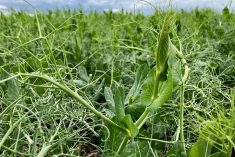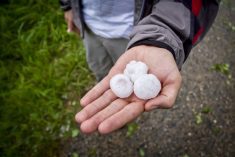Winnipeg, June 15 (CNS Canada) – Farmers in Saskatchewan have seeded 99 percent of the crop, just slightly ahead of the five-year average.
Saskatchewan Agriculture’s June 6-12 crop report states producers in the province have normally seeded 97 percent by this time of year.
The northwest is furthest behind at 97 percent seeded.
A few fields of oats, barley, greenfeed and silage are yet to be sown, said the report.
Most crops are listed as in fair to excellent condition.
Sixty percent of fall cereals, 62 percent of spring cereals, 53 percent of oilseeds and 70 percent of pulse crops are at normal development stages for this time of year.
Read Also

China to buy 12 million metric tons of soybeans this season, Bessent says
U.S. Treasury Secretary Scott Bessent said on Thursday that China has agreed to buy 12 million metric tons of American soybeans during the current season through January and has committed to buying 25 million tons annually for the next three years as part of a larger trade agreement with Beijing.
Few crops are ahead of normal development. Oilseeds are 44 percent behind, spring cereals are 33 percent behind, pulses 25 percent behind and fall cereals 18 percent behind.
While some northern areas have excess topsoil moisture, southern and central farmers were mostly relieved to see rain fall in many areas this week, replenishing soils and aiding crop development.
Province-wide topsoil moisture conditions are rated at seven percent surplus, 52 percent adequate, 35 percent short and six percent very short. Hay land and pasture topsoil moisture is rated at four percent surplus, 43 percent adequate, 41 percent short and 12 percent very short.
Persistent winds are slowing weed control operations in many areas and have caused some damage. Cutworms, flea beetles, localized flooding, hail and lack of moisture have also caused damage in some areas, according to the report.
Some producers are preparing for haying.














